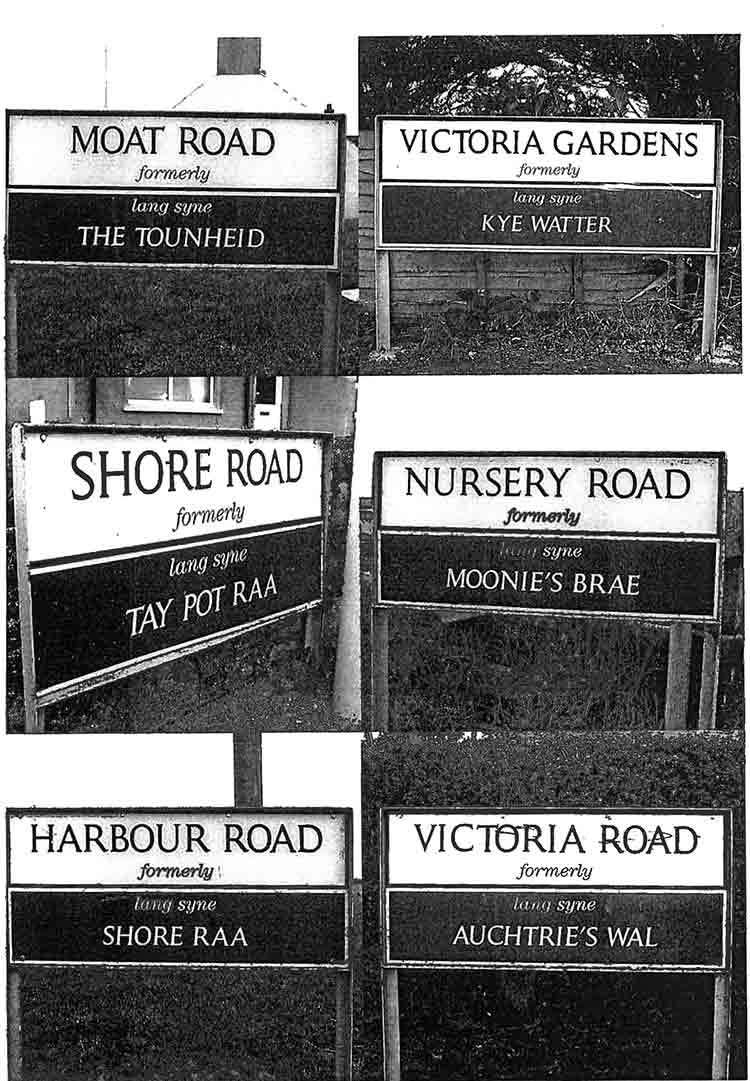Signs of Encouragement!
Author: Mark Thompson
Date: 1999
Source: Ullans: The Magazine for Ulster-Scots, Nummer 7 Wunter 1999
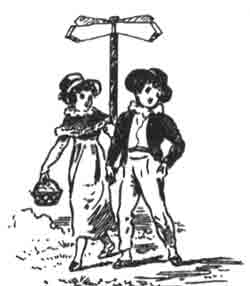
Ulster-Scots Street Signs in the Ards
Over the last few years, official bilingual English and Ulster-Scots street signs have been erected in the Belfast, Castlereagh and Ards Council areas.
Thanks to Ards Borough Council taking the lead, many of the old names are now back in their rightful place, revitalising Ulster-Scots communities with their old, original names rich with local humour, colour and heritage.
Greyabbey (Greba) was the first village in the British Isles to have bilingual English/Scots street signs back in 1996; signs have now also been erected in Ballywalter and Ballyhalbert.
We hope this will inspire people across Ulster to bring their Ulster-Scots streetnames back into everyday use — perhaps your ain hame toun will be next!
ARDS
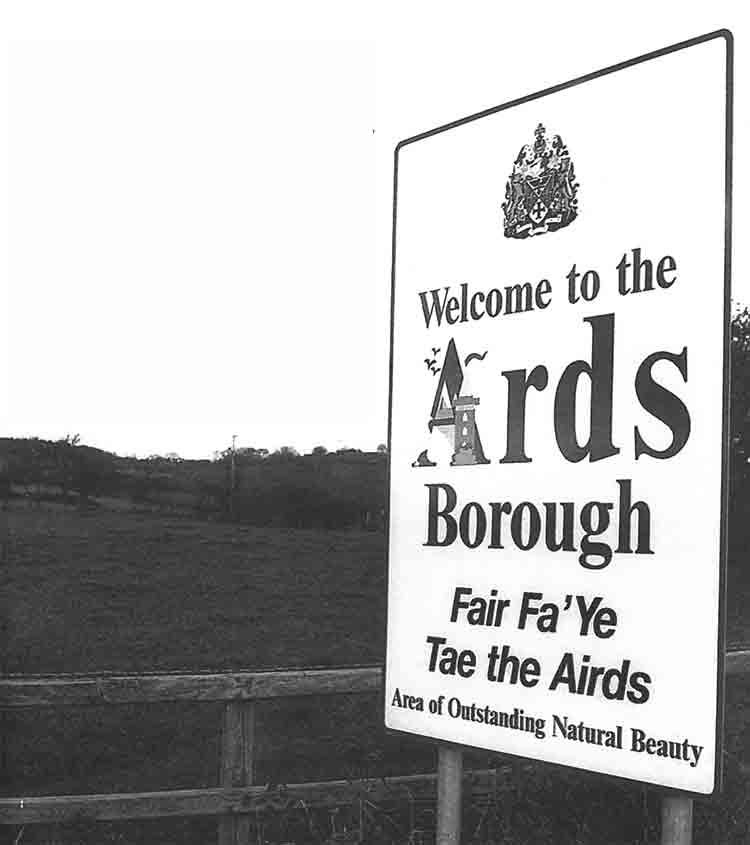
BALLYWALTER
Whitkirk
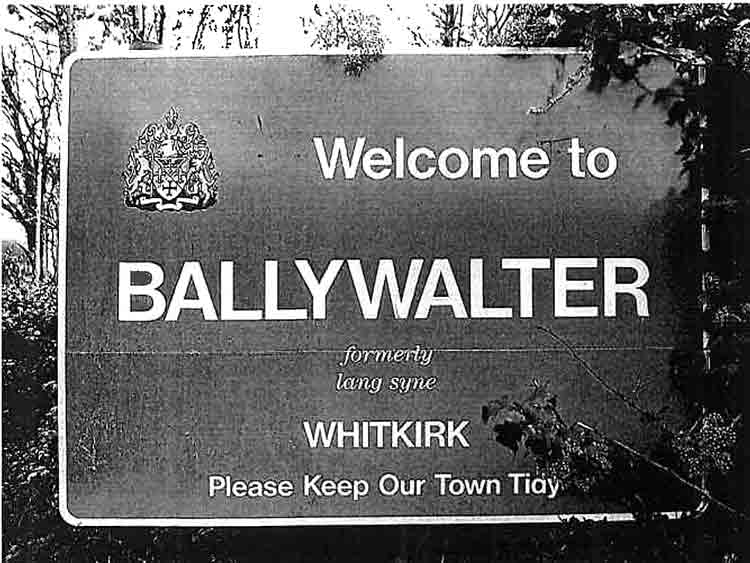
Ballywalter is situated midway down the Ards Peninsula, on the coast overlooking Scotland. Called Whitkirk as far back as the 12th Century, it is believed to have had a close relationship with the ancient Scots Christian settlement of Whithorn, which is on the opposite coastline facing across to Ballywalter.
Whitechurch Cemetery and Whitechurch Caravan Park bear testimony to Ballywalter’s former name.
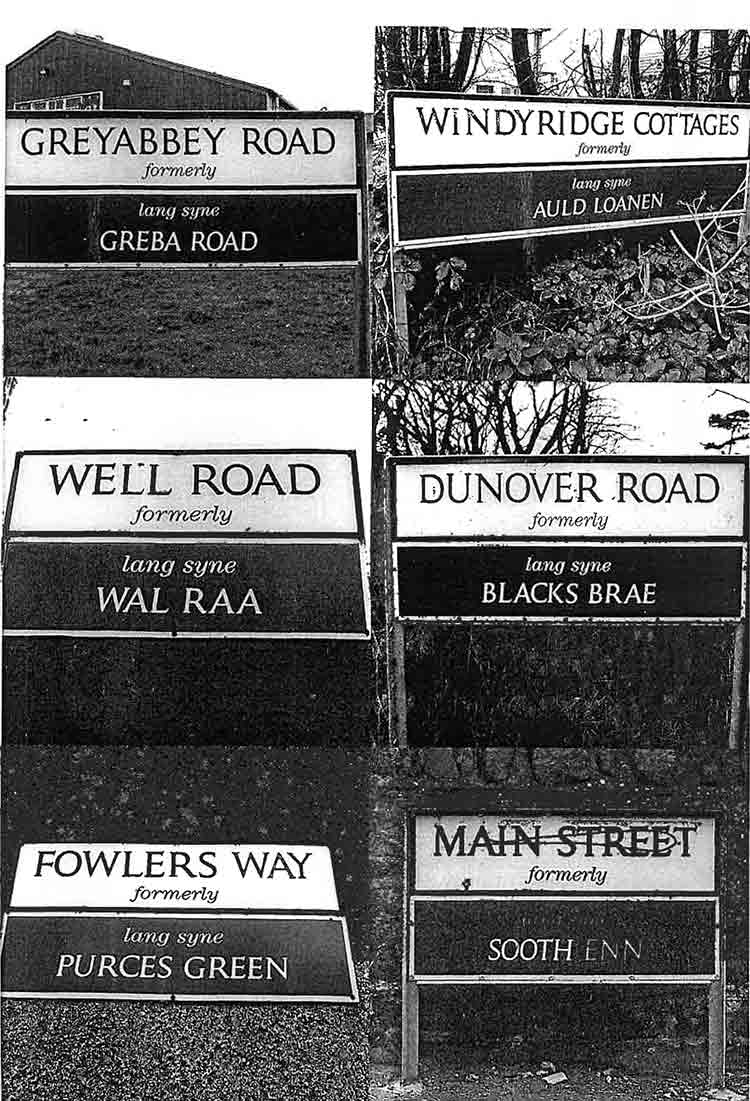
BALLYHALBERT
Talbotstoun
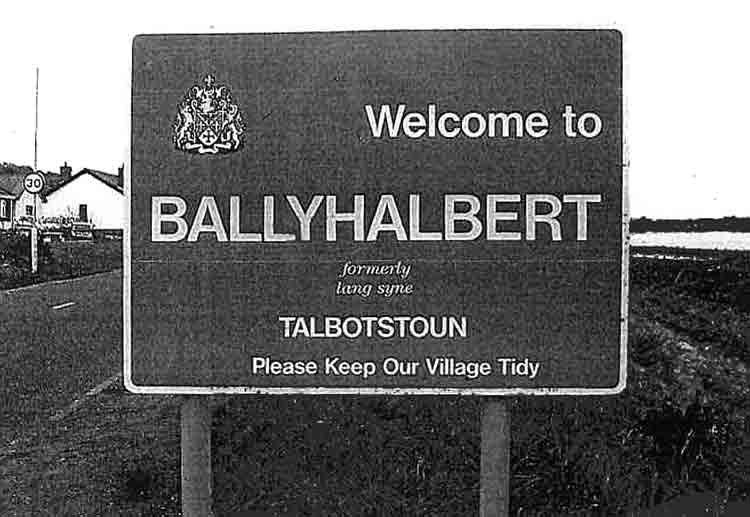
Ballyhalbert is three miles south of Ballywalter, also on the coast overlooking Scotland. Originally called Talbotston, or Halbertston as far back as the 12th Century, some locals claim that Ballyhalbert’s first settlement — at the townland of Clydesburn —was settled by Scots in the early 1600s.
A promotional booklet for the Ards from the mid-1980s said of Ballyhalbert:
“… here, in Ballyhalbert, the visitor will hear a tongue as broad as any Scot …”
